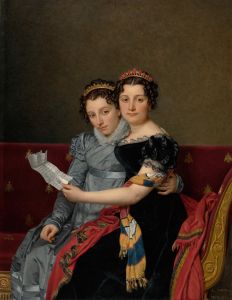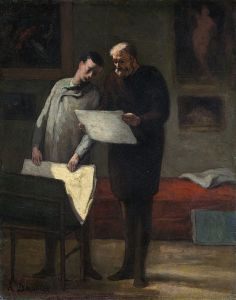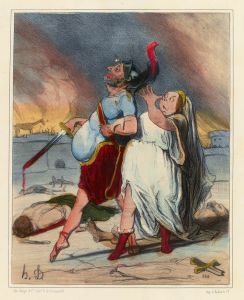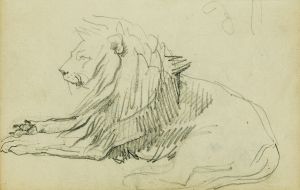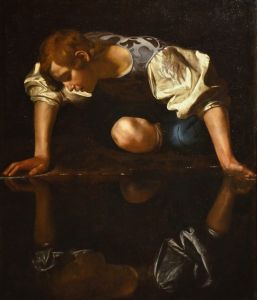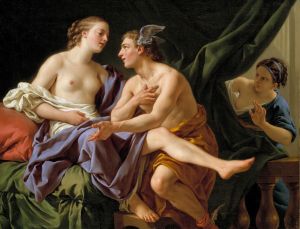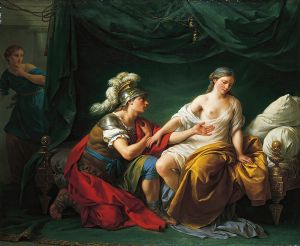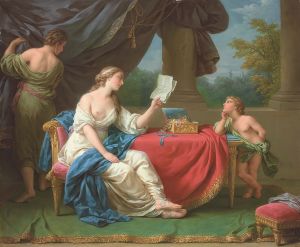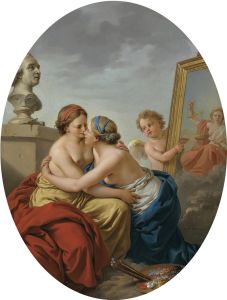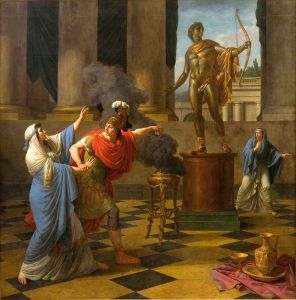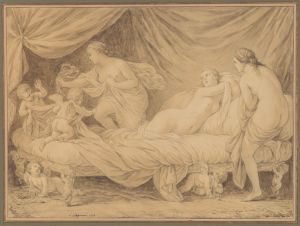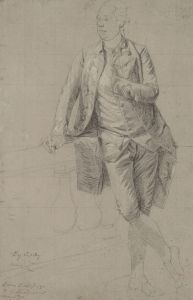
l’unione di pittura e scultura
A hand-painted replica of Louis-Jean-François Lagrenée’s masterpiece l’unione di pittura e scultura, meticulously crafted by professional artists to capture the true essence of the original. Each piece is created with museum-quality canvas and rare mineral pigments, carefully painted by experienced artists with delicate brushstrokes and rich, layered colors to perfectly recreate the texture of the original artwork. Unlike machine-printed reproductions, this hand-painted version brings the painting to life, infused with the artist’s emotions and skill in every stroke. Whether for personal collection or home decoration, it instantly elevates the artistic atmosphere of any space.
Louis-Jean-François Lagrenée was an 18th-century French painter known for his works in the Rococo and Neoclassical styles. He was a prominent figure in the art world during his time, having been a member of the prestigious Académie Royale de Peinture et de Sculpture. Lagrenée's works often depicted classical and mythological themes, which were popular subjects in the art of his era.
"L’unione di pittura e scultura" is one of Lagrenée's notable works, although specific details about this painting are limited. The title translates to "The Union of Painting and Sculpture," which suggests that the artwork likely explores the relationship or harmony between these two art forms. This theme would have been particularly relevant during Lagrenée's time, as the 18th century was a period when the boundaries between different art forms were often explored and celebrated.
Lagrenée's style was characterized by a delicate and refined approach, with an emphasis on grace and elegance. His paintings often featured soft color palettes and smooth brushwork, which were hallmarks of the Rococo style. However, as his career progressed, he also incorporated elements of Neoclassicism, which was gaining popularity towards the end of the 18th century. Neoclassicism was marked by a return to classical ideals and a focus on simplicity and symmetry, contrasting with the ornate and decorative nature of Rococo.
The concept of uniting painting and sculpture can be seen as an allegorical representation of the interconnectedness of different art forms. During the 18th century, there was a growing interest in the idea of the "sister arts," which posited that painting, sculpture, and architecture were closely related and could enhance one another. This idea was rooted in the classical tradition, where artists like Leonardo da Vinci and Michelangelo were celebrated for their mastery of multiple disciplines.
Lagrenée's work often reflected the intellectual and cultural currents of his time. As a member of the Académie Royale, he would have been well-versed in the theories and debates surrounding art and aesthetics. The Académie played a crucial role in shaping the artistic standards of the period, and its members were influential in promoting the ideals of harmony and balance in art.
While specific information about "L’unione di pittura e scultura" is scarce, it can be inferred that the painting embodies Lagrenée's interest in classical themes and his skillful blending of Rococo and Neoclassical elements. His ability to convey complex ideas through graceful compositions and his mastery of technique made him a respected figure in the art world of his time.
In conclusion, Louis-Jean-François Lagrenée's "L’unione di pittura e scultura" represents the artist's engagement with the artistic and intellectual currents of the 18th century. Although detailed information about the painting is limited, its title and the context of Lagrenée's career suggest that it explores the harmonious relationship between painting and sculpture, reflecting the broader cultural interest in the interconnectedness of the arts during this period.





